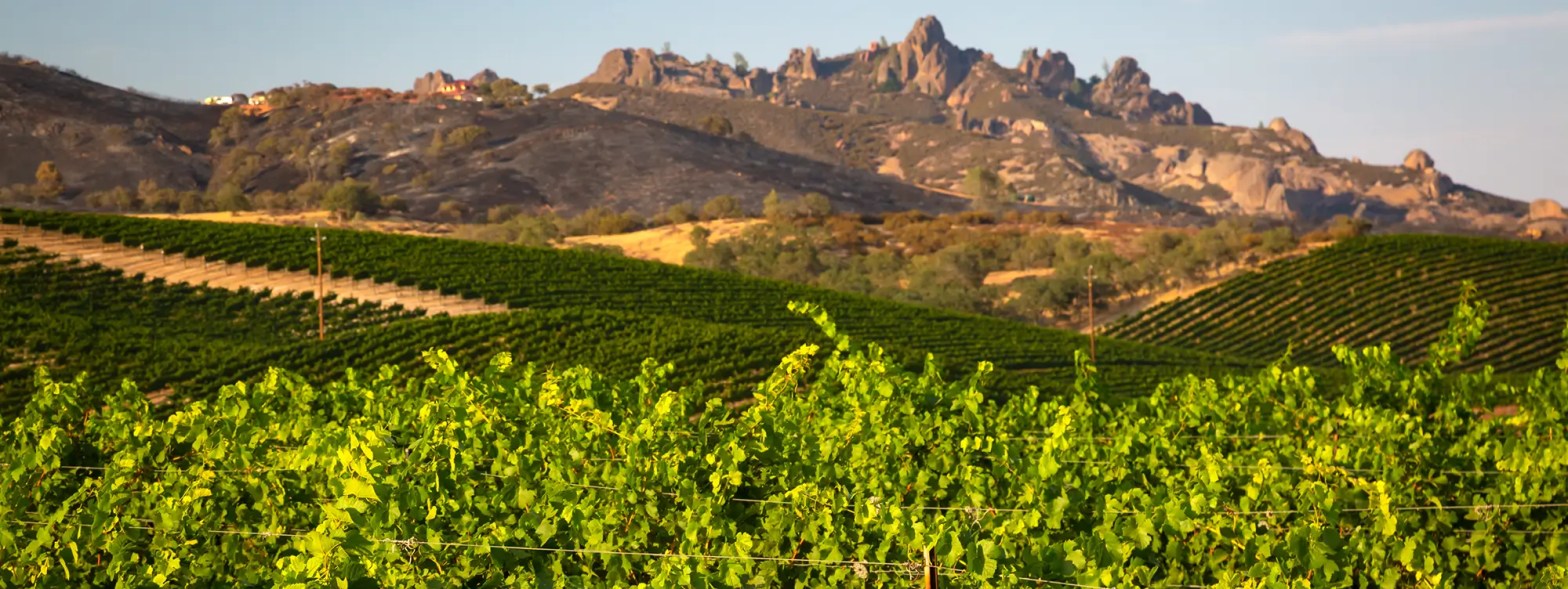
Our Vineyards
Located in the remote Gavilan Mountain range 1,800 feet above Salinas Valley, Chalone’s iconic rugged vineyards sit at the base of an extinct volcano bordering the Pinnacles National Park and is the oldest producing vineyard in Monterey County since 1919. As the only winery in the Chalone AVA, Chalone Vineyard is the oldest bonded winery in Monterey, and the vineyards thrive in this dry, arid land that averages less than 15 inches of rainfall annually. Despite weather variations, Chalone Vineyard’s wine quality remains consistent with each vintage, as the grape’s unique character is not based on weather, but on its unique vineyard soils. A combination of various unique environmental elements results in vividly flavored grapes that produce wines with pronounced varietal character and a great deal of complexity.

Sustainable Farming
Sustainable Agriculture has conservation at its root–meeting the needs of the present without compromising the future. Only 250 acres of certified-sustainable vines are woven into the diverse terrain of Chalone Vineyard land. Another 750 undeveloped acres of wild grasslands and heritage oak trees cover the hills. Chalone’s early adoption of vertical viticulture requires a steadfast understanding of soil conservation. The thin, irreplaceable topsoil must be protected with a diverse cover crop serving many purposes. It anchors and protects the precious soil, preventing erosion; captures and affixes nitrogen; and harbors a varied community of beneficial insects that aid in pest management. Water conservation is addressed through a complex network that allows the delivery of exact portions to each vine through a precisely controlled drip irrigation system. Evaporation is held to an absolute minimum. Stewardship of human resources is also of prime importance- an ongoing balance between mechanization and hands-on vine tending.
Terroir
Terroir may not be tangible, but its presence is undeniable in the wines of Chalone Vineyard, where the soil composition is significantly similar to that of Burgundy. A French word that has no direct English translation, terroir can be loosely interpreted as a sense of place conveyed through wine. The idea of terroir encompasses not only the soil but also the subsoil, drainage, degree of slope, soil temperature, orientation to the sun and the influence of climate on all these factors.


Climate
Dramatic climate changes occur at Chalone Vineyard, not only from season-to-season, but from hour-to-hour. Although the Chalone Appellation is part of Monterey, it sits above the fog that shrouds the Salinas Valley for much of the day. During the growing season, the fog usually burns off between in the early morning leaving intense sunlight in its wake. This warming effect is greatly tempered by the mist and cool air from the Pacific Ocean, which swirls around the Pinnacles and its neighbor, Chalone Peak. These climatic influences can produce temperature variations between 40 to 90 degrees, ideal conditions for growing Chalone grapes, maintaining their acidity while fully developing flavors.
Soil
Chalone vineyard is one of the few in the United States that grows grapes in limestone-based soils. The vineyard soils are quite unusual in that the limestone deposits are interspersed with decomposed granite and moderate amounts of clay. The limestone in the soil causes the vines to struggle, limiting their vigor, and resulting in more flavor and complexity in the grapes. The decomposed granite has very little water-retaining capability, which further reduces the vines vigor, making canopy management relatively unnecessary. The structure of the soil influences drainage, helping create homogeneity of ripeness in the grapes, and the overall soil composition produces distinctive minerality and brioche flavors in our wines. The overall soil composition.

